Clausena anisata
| Botanical Name | Clausena anisata |
|||||||||||||||||||||
| Family | Rutaceae - The rue, buchu & citrus family. |
|||||||||||||||||||||
| Pronunciation | klaw-SEE-nuh an-ee-SAH-tuh |
|||||||||||||||||||||
| Common Name(s) |
English: Horsewood
Afrikaans: Perdepis
IsiXhosa: umnukambile; umtuto; isifuta
IsiZulu: Umsanga; Unukambiba
Tshivenda: Mudedede; Murandela
|
|||||||||||||||||||||
| Plant Group |
|
|||||||||||||||||||||
| Plant Size |
|
|||||||||||||||||||||
| Position |
|
|||||||||||||||||||||
| General Information |
|
|||||||||||||||||||||
| Specific Information | A small, neat and attractive tree. Clausena anisata is often maligned, as the crushed leaves give off a strong aniseed-like scent which is considered by many to be unpleasant - in some plants the smell is pleasant but in others it's Arikaans common name Perdepis, meaning 'horse urine' is most descriptive. The ripening fruits which turn from red to black are much loved by birds and are very attractive. This tree deserves a spot in any garden - don't crush the leaves if you find the scent objectionable. |
|||||||||||||||||||||
| Ad Break | ||||||||||||||||||||||
| Flowers | ||||||||||||||||||||||
| Description | loose sprays of small star-shaped flowers |
|||||||||||||||||||||
| Season |
|
|||||||||||||||||||||
| Colour |
|
|||||||||||||||||||||
| Growth Rate |
|
|||||||||||||||||||||
| Plant Uses |
|
|||||||||||||||||||||
| Distribution and Habitat | from Bredasdorp in the Western Cape, along the coast through the Eastern Cape and Kwazulu-Natal to Mpumalanga and parts of Mozambique and Zimbabwe, north through all tropical and sub-tropical parts of Africa and Asia, in the undergrowth of, and on the margins of, evergreen to semi-evergreen forests and woodlands |
|||||||||||||||||||||
| Planting Suggestions | Best planted in a lightly or partially shaded position in soil to which compost has been added. Mulch well to retain moisture. The old method of digging a deep hole and filling it with soil and compost has resulted in many trees failing to thrive, dying, rotting at the base or worse still, falling over in later years due to poor root development. Refer to the following sites for the best method of planting trees: International Society of Arboriculture: New Tree Planting Tree People: Plant the right way For those of you who have a clay problem try: |
|||||||||||||||||||||
| Medicinal Uses | Traditionally in South Africa, new-born babies are passed through the wood smoke to fumigate them and a leaf infusion is used as a steam bath as a deodorant, to cleanse the body internally, to cure rheumatism and to strengthen the heart. The leaves, bark, wood and roots of Clausena anisata are used extensively across Africa and Asia for a myriad of ailments too numerous to list here, but including the treatment of fever, pneumonia, headache, sore throat and sinusitis, wounds, aching teeth, sores, abscesses, burns, haemorrhoids, whooping cough, malaria, syphilis, kidney troubles, diabetes and as an insect repellent. |
|||||||||||||||||||||
| Ad Break | ||||||||||||||||||||||


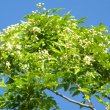
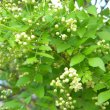
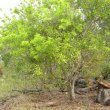
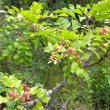
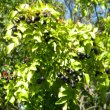
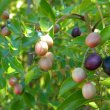


Comments
Perdepisbos
I always found it such a weird name growing up, Perdepisbos.
In all honesty, I think its a beautiful fragrance that comes from the plant. Its actually a smell that brings back many fond memories of family vacations and fishing trips etc.
I'm presently doing research to plant it in my new garden!
I found that, at my parents house, the scent masks general bad odours from keeping dogs etc.
Can't wait to get started :)
Thanks for the info
Perdepisbos
Hi Lester
I agree - I like the fragrance but most visitors to the nursery are immediately put off by the odour. I smell it as aniseed, but some people literally recoil from it in disgust. I'm going to try rubbing the leaves on my skin to keep flies away while I work - perhaps better done when the nursery is closed. If it works, I'll post it but I can't see many people wanting to follow suit.
Enjoy your new garden.
Regards
Lorraine
Clausena anisata
Please give more info regarding how these leaves should be prepared to use medicinally and how often it should be drunk.
Medicinal use
Hi John
Apologies for not replying to your query for so long.
As I am not a qualified indigenous healer, I am unable to give you this information. You might get some enlightenment from a Muthi shop or you would need to visit an indigenous healer.
Kind regards
Lorraine
Clausena anisata centre of diversity
Does anybody know where Clausena anisata has its centre of diversity (i.e. where in Africa does it come from originally)?
Information already supplied
Hi Pierre
Please read under the heading 'Distribution and Habitat' above.
Regards
Lorraine
Discuss this plant
Share knowledge, ask a question or give an experience.